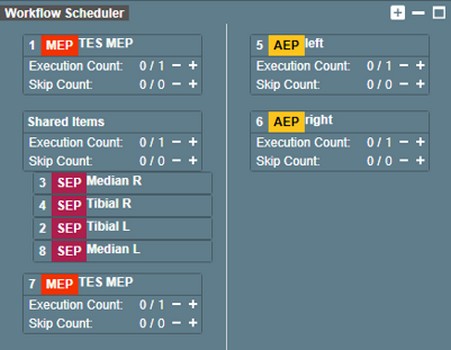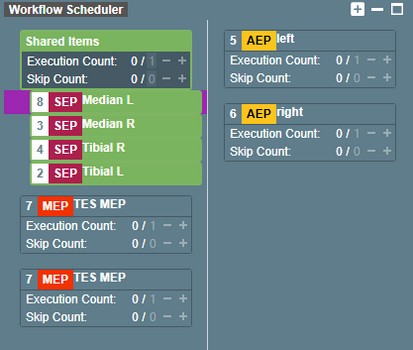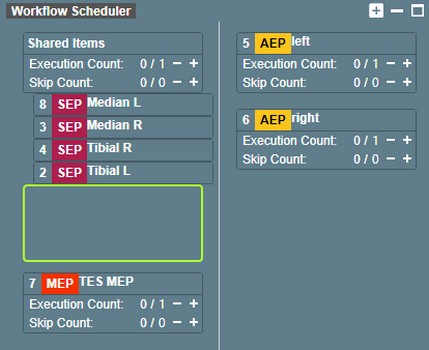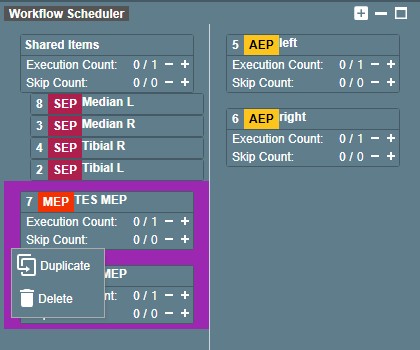EMIG GmbH - Official distributor of medical equipment in the following regions of Europe and beyond:
- Meyer & Haake – Ukraine, Austria, Germany (Bavaria); RiwoSpine – Ukraine, Moldova, Estonia;
- Inomed – Ukraine, Moldova, Estonia; Fluoptics – Ukraine.
ISIS Neurostimulator
New possibilities in IOM: The ISIS neurostimulator with stimulation artifact suppression
The ISIS Neurostimulator's flexible, unique and US patented technology has been specifically designed to meet the most demanding requirements of intraoperative neuromonitoring.
- High current and direct nerve stimulation with monophasic, biphasic and alternating pulse forms
- Use as a single device or as part of the ISIS IOM system via the integrated NeuroExplorer software
- Continuous impedance control of the stimulation electrodes during the operation
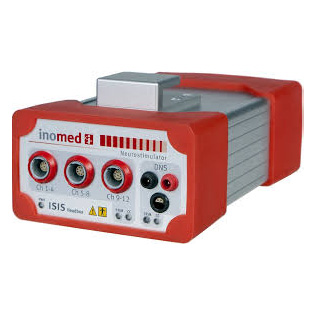
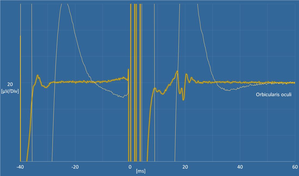
Stimulation artifact suppression
With the newly developed and German patented technology for the suppression of the stimulation artifact, signals with short latency and low amplitude can be displayed more clearly. Whether D-wave or corticobulbar MEPs, less superimposition makes it easier to identify the signals.
Maximum flexibility with the ISIS neurostimulator
The 12 channels for high current stimulation (max. 250 mA) and one channel for direct nerve stimulation (max. 25 mA) allow the use of different neurophysiological measurement methods in neurosurgery, epilepsy surgery, general and visceral surgery as well as otorhinolaryngology.
Easy and safe to handle
Stimulation and discharge adaptor for electrode connection:
- The adaptor boxes connecting the electrodes to the ISIS neurostimulator for neurostimulation are simple and safe to use - thanks to color-coded slots, plug connections and cables.
- A clear and distinct marking speeds up the connection of the electrode.
- If required the connection to a neurodiagnostic system is possible. The results of neurostimulation can be displayed and documented in the form of EMG or iEEG signals.

Attributes
- Stimulation artifact suppression
- Constant current stimulator with 12+1 flexible outputs for direct nerval, cortical, muscular, transcutaneous and transcranial electrical neurostimulation
- Stimulation current adjustable from 0.01mA to 250mA in individually definable steps
- Impedance measurement and current flow control display
- Simple programming of an unlimited number of application-specific stimulation programs
- Patient database for documentation
Application Fields of Neurostimulation
- Transcranial electrical neurostimulation for motor evoked potentials
- Direct cortical and subcortical neurostimulation of the speech and motor cortex
- Direct intracerebral neurostimulation for localization of functional disorders in pre-surgical epilepsy diagnostics
- Direct nerve stimulation for monitoring of cranial and peripheral nerves including nerve action potential measurements
- Nerve and muscle stimulation for pelvic and anal atresia surgery
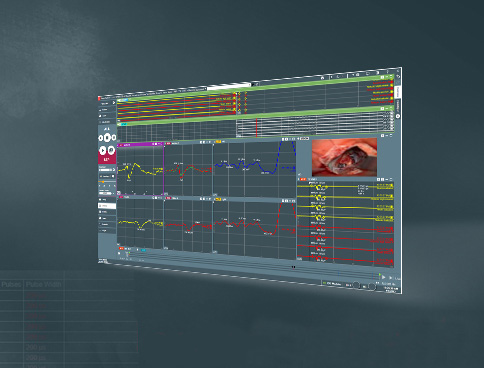
The intuitive NEX software offers a host of user-friendly functions, ensures clear overview and is quick to master in the often stressful operating room environment.
- Modern look, adapted to the hardware
- Easy to use due to beginner-friendly functions, such as Atlas for electrode placement
- New monitoring possibility: workflow scheduler. To create your own stimulation workflow, duplicate, group or re-order stimulation windows
- Wide range of pre-set measurement scenarios tested by leading users
- Data export in different formats, such as XLSX, ASCII and EDF
All ISIS Xpert, ISIS Xpert plus und ISIS Xpress systems are equipped with the new, particularly flexible NeuroExplorer software generation.
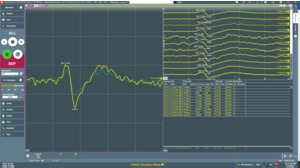
- Utilise different graphical features, such as superimposing traces and analysis tables for interpretation
- Use incisive time bar for easy review
- Compose reports in PDF and DOCX for easy retrospective adjustment
- Rapidly add windows or electrodes on the fly and move them via drag and drop
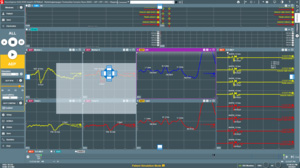
- Be the layout artist: create customised views and desktops to your needs
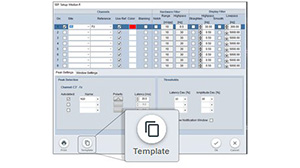
- Create and share templates – save time
New monitoring possibility of NeuroExplorer extends the application fields of IONM
Workflow scheduler
The workflow of various measurement windows can be determined in the workflow scheduler. All measurement windows used in a scenario can be listed and put in an individual start order.
Features
- Improved usability for effortless and timesaving IONM
- New monitoring possibility of NeuroExplorer extends the application fields of IONM
- Be the layout artist: create customised views and desktops to your needs
Applications
- Monitoring in neurosurgery
- General & visceral surgery, e.g. EMG and pIOM®
- Monitoring during thyroid surgery
- Vascular surgery, e.g. SEP monitoring for carotid stenosis, monitoring during aortic aneurysm surgery
- Orthopaedics and spine surgery, e.g. SEP and MEP
- Cardiothoracic surgery, e.g. SEP and MEP

Neurophysiology focuses on the nervous system's function, (i.e. the brain, spinal cord and all nerves). With neurophysiological monitoring, the functions of the nervous system are monitored to detect and, if possible, prevent damage.
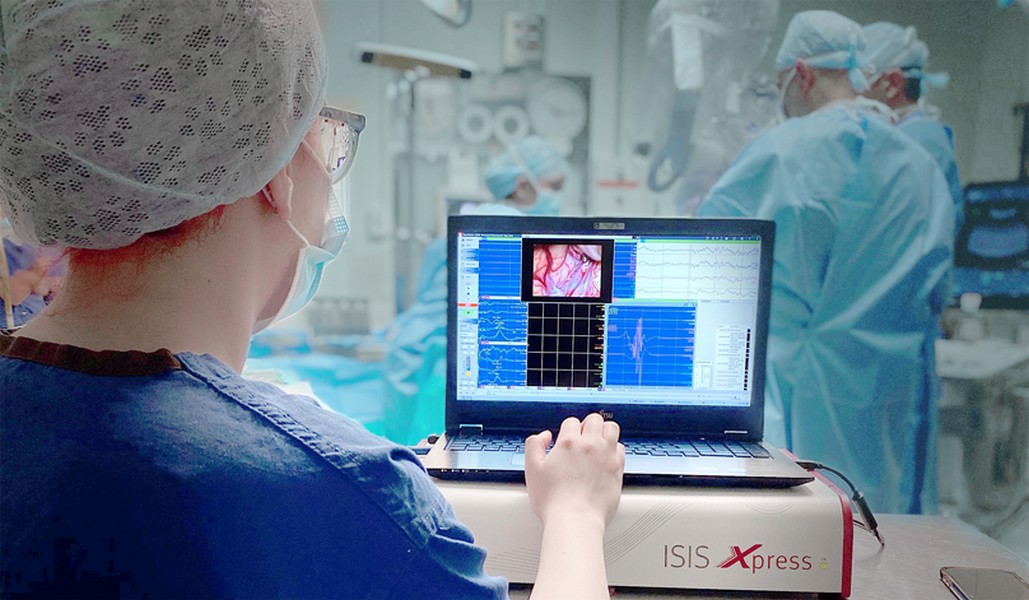
How neurophysiological monitoring works
Signals are exchanged in the nervous system via electricity and messenger substances, so-called neurotransmitters. In neurophysiological monitoring, electricity and sensory stimuli (e.g., sounds, light) are used to stimulate the nerve (cells) and thus check whether everything is working.
In the past, the signals produced could only be viewed or listened to as muscle twitches. Today, thanks to advanced technology, it is possible to view, save and evaluate the signals digitally on a computer.
Neurophysiological monitoring is used to determine the cause of symptoms (e.g. measurement of nerve conduction velocity in carpal tunnel syndrome) or to have a basis for orientation before starting surgery (e.g. hearing function in operations on the auditory nerve).
During surgery, intraoperative neurophysiological monitoring can be used to monitor nerve functions and identify tissue at risk.
Neurophysiological monitoring can also be useful after surgery, e.g. to assess how well patients are recovering from a serious accident.
Neurophysiological monitoring is performed and evaluated by specially trained personnel. They can be medical technicians, neurophysiologists, doctors, and other people with a medical or technical background.
Further information about neurophysiological monitoring can be found at the national and international neurophysiological societies, science databases and, of course, our courses and trainings.


